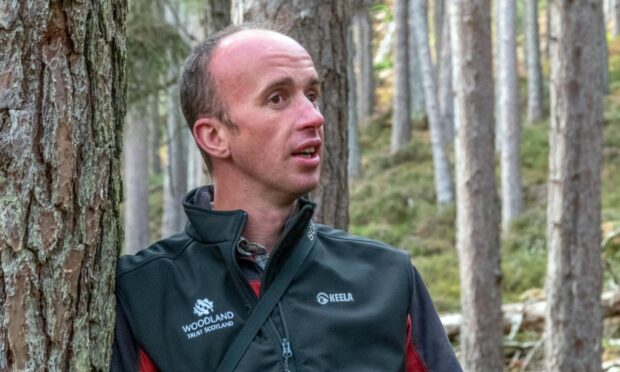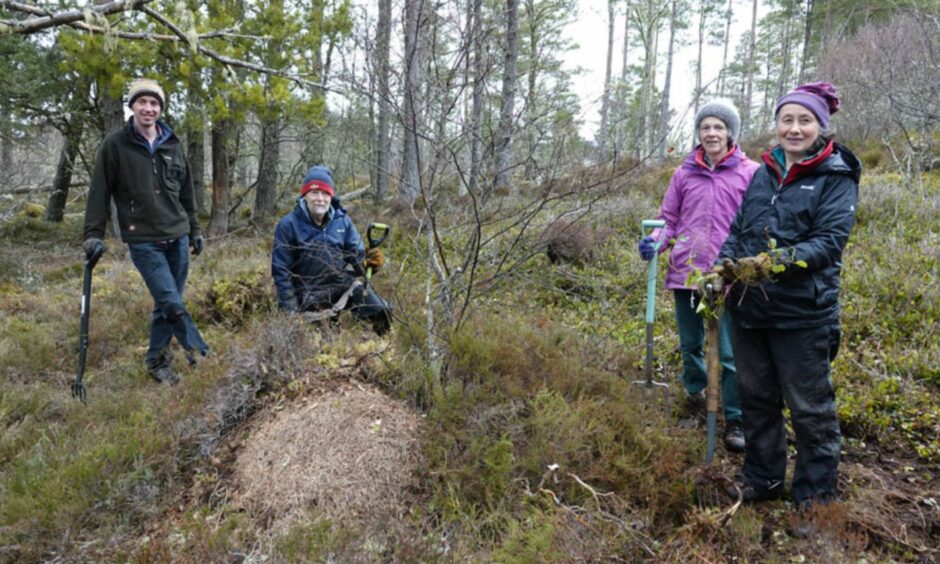Parts of the Highlands under threat from foreign invaders could find help from overseas.
Invasive non-native plants cause problems in many areas of the region where they put at risk native species and wildlife.
NatureScot estimates invasive species cost Scottish agriculture and forestry more than £246 million a year to control and manage.
Now one woodland manager hopes projects tackling the issue in other parts of the world could be used increasingly here.
How do we get rid of giant hogweed?
Ross Watson manages sites across the north for Woodland Trust Scotland, including Urquhart Bay, Balmacaan and Abriachan on Loch Ness; Ledmore and Migdale in Sutherland; and Uig on Skye.
He has overseen work removing invasive species, including rhododendron, Japanese knotweed, giant hogweed, Himalayan balsam and cotoneaster.
He has been awarded a Churchill Fellowship to discover how people in Cambodia are tackling similar issues.
Next year he will also spend three weeks following a river through Slovenia, Croatia and Serbia on a similar mission.
In Cambodia, water-hyacinth is a pest plant that blocks waterways and limits boat traffic.
But in the Tonlè Sap floating village the harvested plants, once decomposed, can be used as a base for growing fruit and vegetables for the community.
A handicraft cooperative also creates woven products from the water hyacinth. This generates income from tourists while addressing an ecological challenge.
In parts of Europe, communities are also harvesting invasive plants to manufacture a useful by-product. They are using Himalayan Balsam to make paper.
Ross says the projects are unlikely to be directly replicated in Scotland. But he add they are good examples of community cooperation and partnership which would be copied in some way.
In Scotland, there are just a few small examples of re-using invasive species – to make dyes or biochar, a form of charcoal – but he believes there is scope to scale up efforts.
“Once harvested we can find alternative use for the plants. There are things we are already doing here but on a tiny scale.
Can you remove Japanese knotweed forever?
“How do we market that and make that more accessible locally or within Scotland?
“And what else are people doing? How are the overcoming it, I’m sure there are many more examples.
“But ultimately its about the long-term removal with the people who live there at the heart.”
He says to be successful, there needs to be a change of focus in tackling the issue here.
“In the UK we might get a funding programme for three years to remove rhododendron or Japanese knotweed.
“But after the three years what happens? If the funding runs out the plant comes back.
“We shouldn’t be thinking about three years’ time but about 10 years’ time and take a much longer-term approach and much wider land management and community approach.
“We should be trying to think differently. Rather than the short-term ‘let’s get rid of them’, we should be looking at what we do with the land afterwards.”
“How can we create something by removing invasives? How do we involve young people? Is there a social enterprise opportunity through using a by-product?
He says some projects should be transferable between the tropical rainforest of Cambodia and the temperate rainforest of the west coast.
“It’s about sharing ideas but also creating a collective feeling we are not isolated in dealing with invasive plants in our habitats.
“It’s a global issue which we can tackle by creating a network of people who share ideas and information.”
Is rhododendron dangerous?
Problem plants are being tackled by the Scottish Invasive Species Initiative (SISI) across an area over a third of Scotland and almost one and half times the size of Wales.
Efforts to reverse the decline of rainforest fragments in Scotland include tackling major threats such as rhododendron which suppresses tree regeneration.
Last year the Scottish Government announced £1.3 million for forest recovery, including controlling invasive rhododendron and managing deer.
But campaigners said the money is just a fraction of what is needed.
Are you interested in more exclusive and breaking Highland and Islands news from the P&J? If so, why not join our dedicated Facebook page HERE


